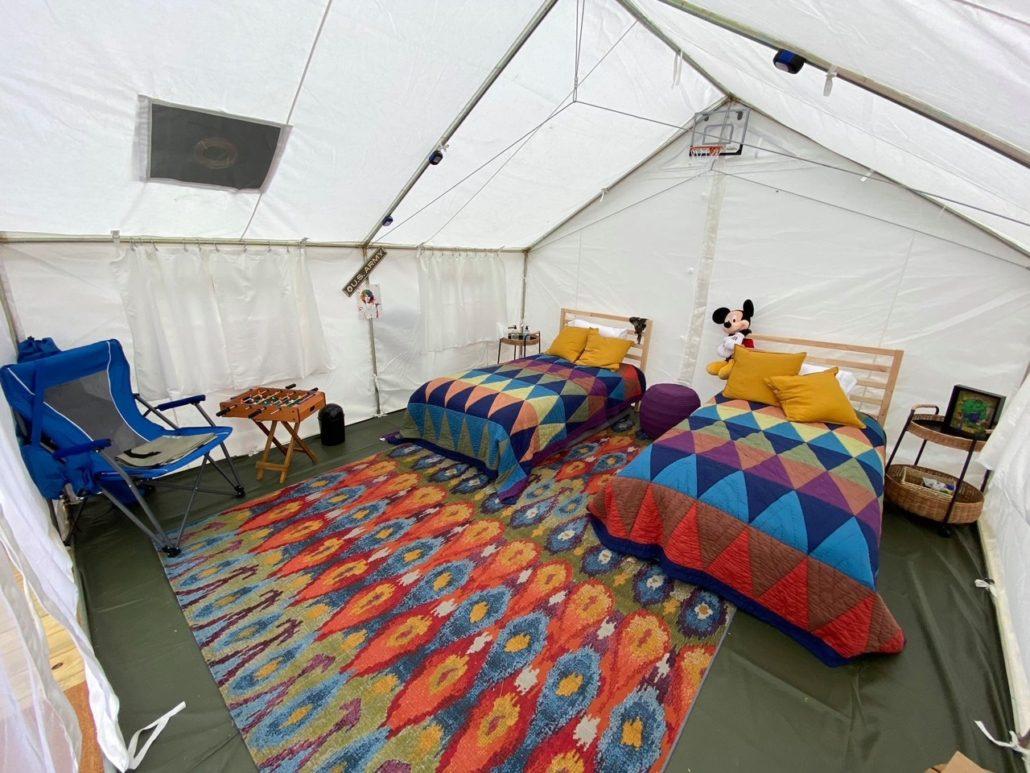5 Tips to Extend the Lifespan of Your Glamping Tents: A Guide by Elk Mountain Tents
Glamping has become a popular way to enjoy the outdoors while still having the comforts of home. However, with this type of camping comes the need for quality and durable tents that can withstand the elements. Elk Mountain Tents is a company that specializes in creating high-quality glamping tents that are designed to last. To help extend the lifespan of these tents, here are five tips to keep in mind.
Tip 1: Proper Cleaning and Maintenance
One of the most important things to do to extend the lifespan of a canvas tent glamping is to clean and maintain it properly. When camping, there are a lot of elements that can stick to the tent, such as dirt, dust, and tree sap. Over time, these elements can weaken the tent fabric and cause it to tear or fray.
To clean the tent, start by removing any debris or dirt with a soft-bristled brush or a clean cloth. Then, use a mild soap and warm water to wash the tent, taking care not to scrub too hard. Rinse the tent thoroughly with clean water and allow it to dry completely before storing it away.
Regularly inspecting the tent for any signs of wear and tear is also important. If there are any small rips or tears, fix them as soon as possible to prevent them from getting larger. Be sure to choose a tent with a high rip and tear strength to ensure maximum life expectancy.
Tip 2: Proper Storage
When not in use, it is important to store the glamping tent properly. This will help prevent damage from moisture, insects, and rodents. Ideally, the tent should be stored in a dry, cool, and well-ventilated area. The tent should be folded neatly and stored in its carrying bag or in a plastic storage container.
It is also important to ensure that the tent is completely dry before storing it. Moisture can cause mold and mildew to grow on the tent fabric, which can weaken it over time.
If you expect your tent to get wet regularly, it’s recommended that you buy a 100% polyester canvas tent. A true polyester canvas is incapable or rotting. While mold can grow on any surface, it is incapable of consuming the synthetic fibers. The same is true for animals and bugs.
Tip 3: Proper Use
Proper use of the glamping tent is also important for extending its lifespan. This means using the tent in the way it was intended and not overloading it with too much weight or putting too much stress on the seams and zippers.
It is also important to take care when setting up and taking down the tent. Rough handling can cause tears and damage to the tent fabric. Following the manufacturer’s instructions for setting up and taking down the tent can help ensure that it is done properly.
However, perhaps the two most important elements to remember are: 1) Properly staking down your tents. A good glamping tent should be able to take a lot but any tent can blow over with enough wind. 2) Know your tents limits. No tent is designed for hurricanes. Read the instructions to know when it’s time to take the tent down.
Tip 4: Protecting from the Sun
The sun can be a powerful force that can damage the fabric of the glamping tent over time. UV rays can cause the fabric to fade, weaken, and become brittle. To protect the tent from the sun, it is important to set it up in a shaded area or use a sunshade to block the sun’s rays.
Additionally, using a protective spray can help to prevent the fabric from fading and weakening due to the sun’s rays. Be sure to choose a spray that is safe for the type of fabric the tent is made of.
Polyester canvas is more resistant to UV rays but not immune to its impact.

Tip 5: Avoiding Harsh Chemicals
Harsh chemicals can damage the fabric of the glamping tent, causing it to weaken and deteriorate over time. Avoid using bleach, harsh detergents, and other chemicals on the tent. Instead, use mild soap and warm water to clean the tent. This is especially true for cotton canvas.
Frequently Asked Questions (FAQs)
Q: How often should a glamping tent be cleaned?
A: Normally, we would recommend lightly cleaning the tent after every use. However, glamping setups are often fairly permenant, so instead we recommend *inspecting* after every occupant’s stay to look for any visible sign of dirt or wear and then only cleaning as needed.
Q: Can a glamping tent be left up all season?
A: Yes, however, understand that it can take a toll on any tent. When only used from time to time, a canvas tent can last decades, but if used like a home semi-permenantly and in all weather, you can expect to see some wear after 2 to 5 years depending on the quality of the material.
Q: How can I protect my glamping tent from animals?
A: Animals, such as rodents and insects, can be attracted to the scent of food and other items in and around the tent. To protect the tent, store food and other scented items in airtight containers and keep them away from the tent. Additionally, sealing any gaps or holes in the tent can help prevent animals from getting inside.
But if you are going to allow the campers to have food anyway, then the next most important thing is cleaning well between each use. Make sure there are no crumbs 🙂
Depending on the critter and the types of treatment used on the canvas, the cotton itself may be desirable to some. For longerm use, consider getting a polyester tent.
Conclusion
Taking care of a glamping tent can help to extend its lifespan and ensure that it provides a comfortable and enjoyable camping experience for years to come. Proper cleaning and maintenance, storage, use, protection from the sun, and avoiding harsh chemicals are all important considerations when caring for a glamping tent. By following these tips and being diligent in caring for the tent, campers can enjoy the great outdoors with peace of mind knowing that their glamping tent will last for many camping trips to come.



